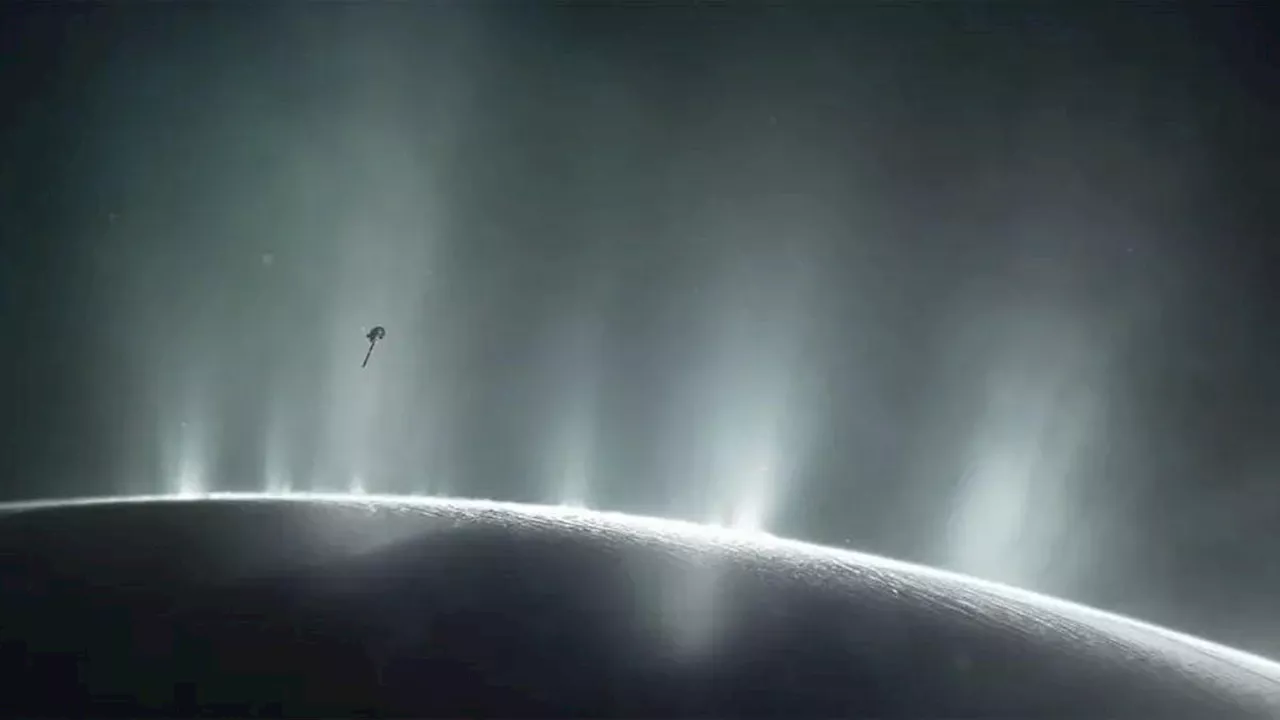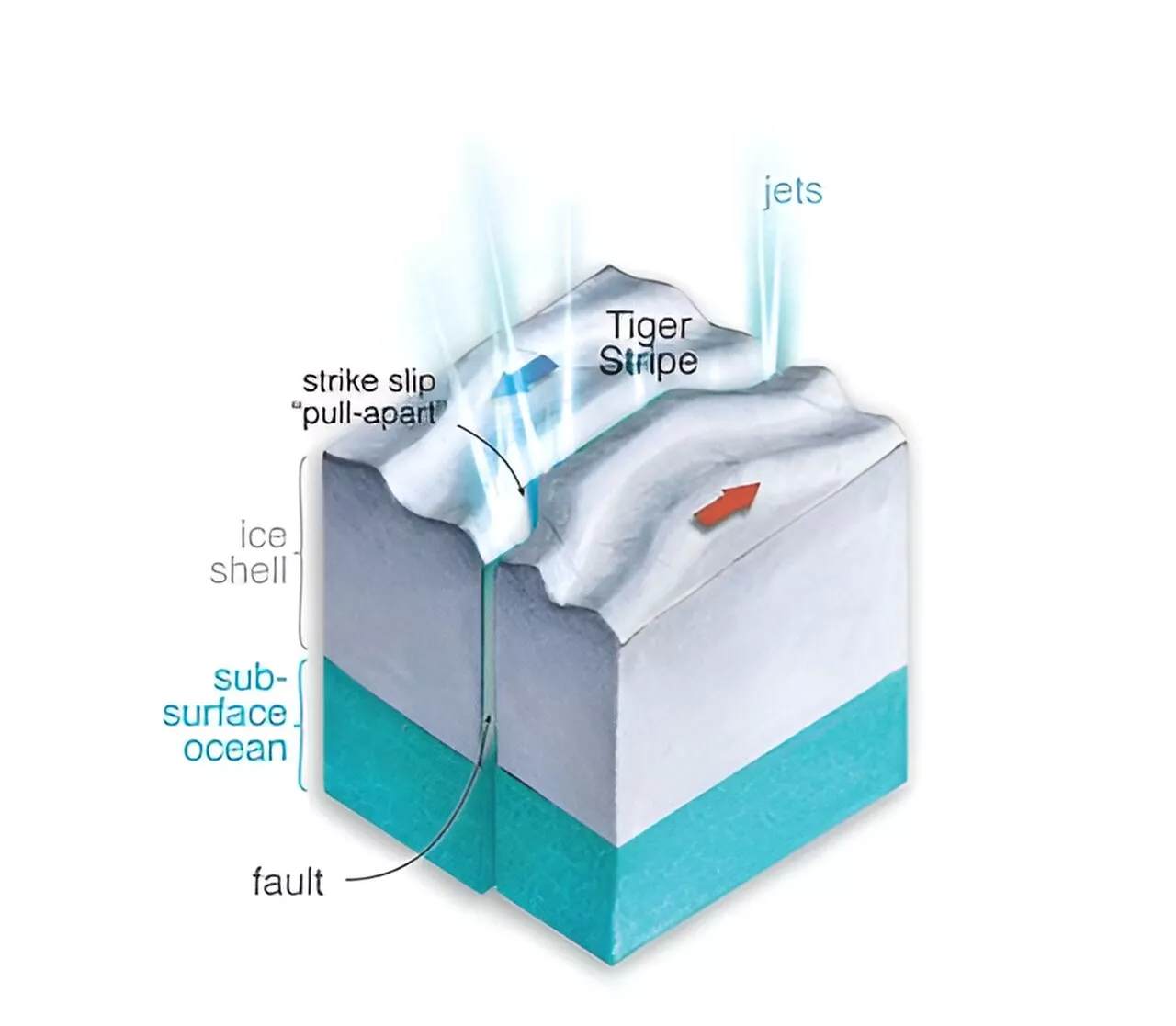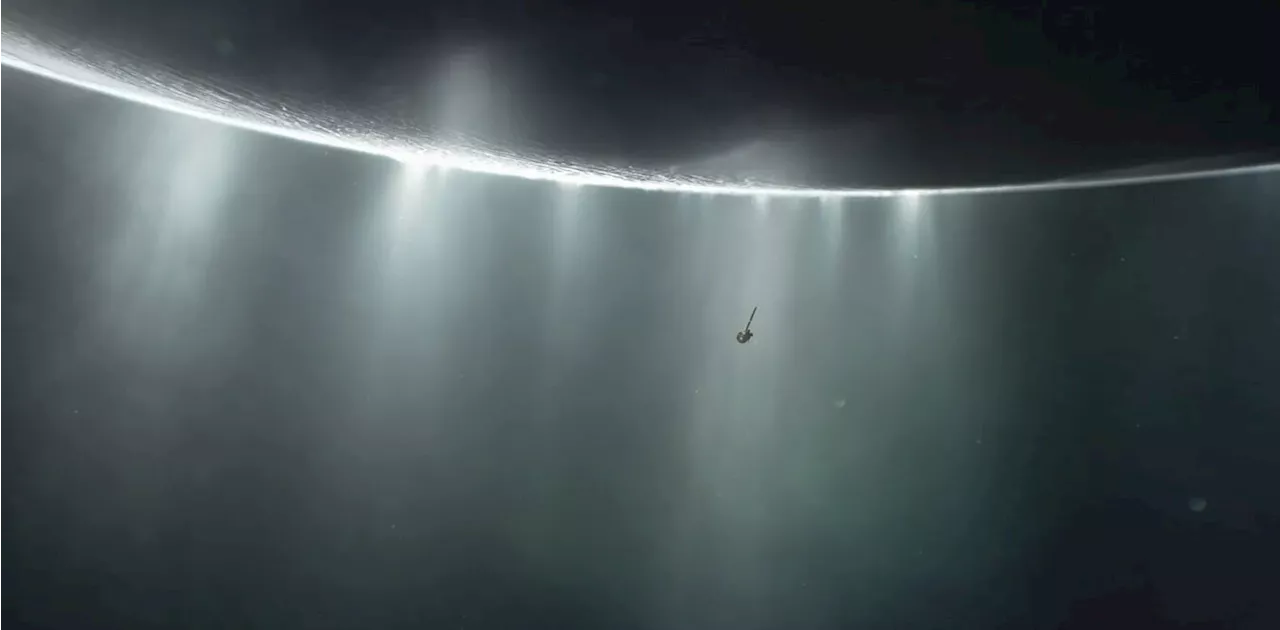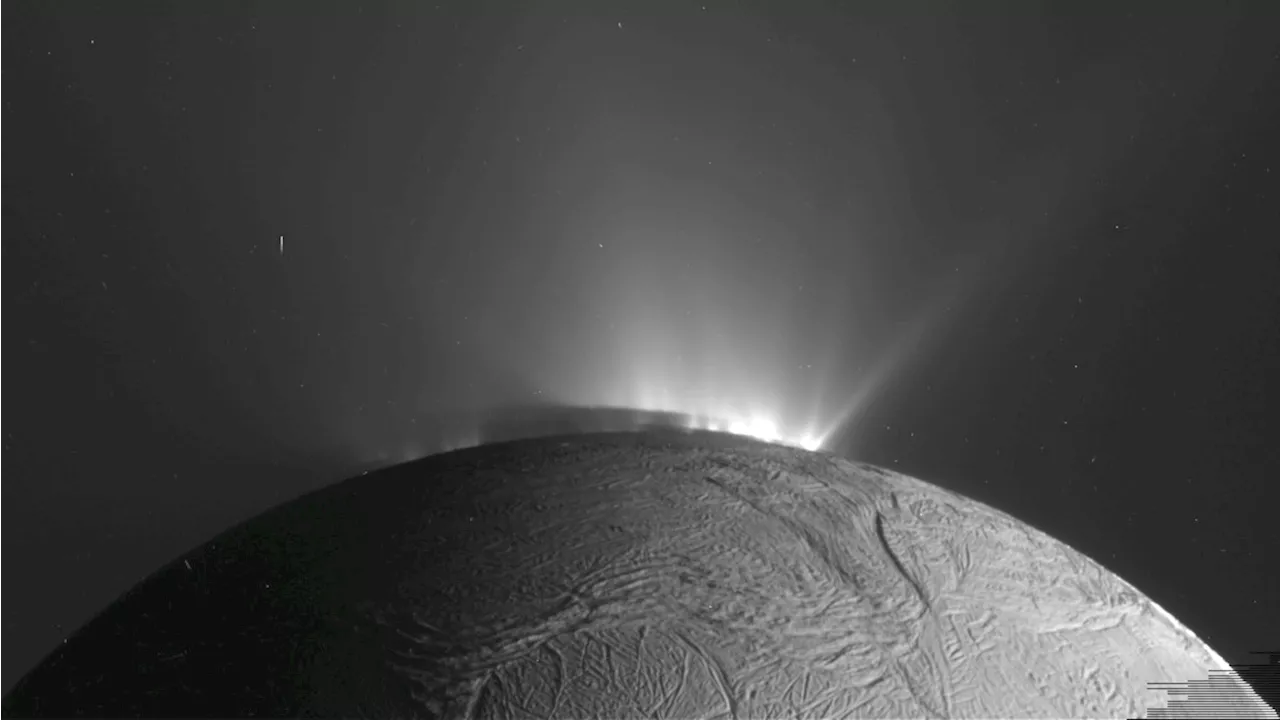Researchers likened the movement of Saturn's stripes to the San Andreas fault.
NASA/JPL-Caltech/Space Science InstituteEnceladus harbors a global, subsurface ocean more than 30 miles deep, that periodically erupts jets of ice crystals and plumes of gas above its South Pole, which were first recognized by
Researchers found Enceladus' eruptions, which vary in brightness, stem from four distinct fractures on the surface of the celestial body, referred to as "tiger stripes." Possible relationship between strike-slip motion and jet activity at Enceladus. Extension along"pull-apart zones" allows water to rise and feed material to jets feeding Enceladus's plume"In our study, we propose that strike-slip or side-to-side motion, similar to what happens on the San Andreas Fault when there's an earthquake, could regulate Enceladus' jets," Berne told ABC News, adding that tides in Enceladus' ocean drives the movement of the tiger stripes.
Berne explained that understanding the transport history of Enceladus' mineral-rich expulsions is instrumental to understanding the potential habitability of the moon.
United States Latest News, United States Headlines
Similar News:You can also read news stories similar to this one that we have collected from other news sources.
 'Tiger stripes' on Saturn's moon Enceladus could reveal if its oceans are habitableRobert Lea is a science journalist in the U.K. whose articles have been published in Physics World, New Scientist, Astronomy Magazine, All About Space, Newsweek and ZME Science. He also writes about science communication for Elsevier and the European Journal of Physics. Rob holds a bachelor of science degree in physics and astronomy from the U.K.
'Tiger stripes' on Saturn's moon Enceladus could reveal if its oceans are habitableRobert Lea is a science journalist in the U.K. whose articles have been published in Physics World, New Scientist, Astronomy Magazine, All About Space, Newsweek and ZME Science. He also writes about science communication for Elsevier and the European Journal of Physics. Rob holds a bachelor of science degree in physics and astronomy from the U.K.
Read more »
 Saturn’s Ocean Moon Enceladus Is Able To Support LifeScientists could one day find traces of life on Enceladus, an ocean-covered moon orbiting Saturn.
Saturn’s Ocean Moon Enceladus Is Able To Support LifeScientists could one day find traces of life on Enceladus, an ocean-covered moon orbiting Saturn.
Read more »
 'Tiger Stripes' on Enceladus Linked to Moon's Spectacular GeysersSaturn's moon Enceladus is known for spewing jets of water-ice into space, with new research revealing a potential mechanism behind this phenomenon.
'Tiger Stripes' on Enceladus Linked to Moon's Spectacular GeysersSaturn's moon Enceladus is known for spewing jets of water-ice into space, with new research revealing a potential mechanism behind this phenomenon.
Read more »
 New study calls into question prior study results that found tumor transmission slowing in Tasmanian devilsA trio of biologists and veterinarians with CRG Barcelona, the University of Cambridge and The Barcelona Institute of Science and Technology, respectively, has found evidence contradicting results found by a prior team of researchers who claimed that they had found that tumor transmission in Tasmanian devils was slowing.
New study calls into question prior study results that found tumor transmission slowing in Tasmanian devilsA trio of biologists and veterinarians with CRG Barcelona, the University of Cambridge and The Barcelona Institute of Science and Technology, respectively, has found evidence contradicting results found by a prior team of researchers who claimed that they had found that tumor transmission in Tasmanian devils was slowing.
Read more »
 Enceladus spills its guts through strike–slip motionOver the course of its elliptical orbit, the moon Enceladus is squeezed unevenly by Saturn's gravitational pull and deforms from a spherical shape into a football shape and back again.
Enceladus spills its guts through strike–slip motionOver the course of its elliptical orbit, the moon Enceladus is squeezed unevenly by Saturn's gravitational pull and deforms from a spherical shape into a football shape and back again.
Read more »
 Saturn's ocean moon Enceladus could support life—researchers are working out how to detect extraterrestrial cells thereSaturn has 146 confirmed moons—more than any other planet in the solar system—but one called Enceladus stands out. It appears to have the ingredients for life.
Saturn's ocean moon Enceladus could support life—researchers are working out how to detect extraterrestrial cells thereSaturn has 146 confirmed moons—more than any other planet in the solar system—but one called Enceladus stands out. It appears to have the ingredients for life.
Read more »
